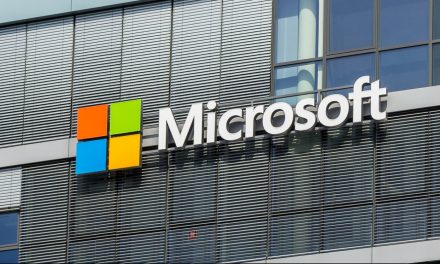MENLO PARK, Calif. – Robinhood Markets, Inc. (NASDAQ: HOOD) today announced financial results for the first quarter, which ended March 31, 2022.
- Total net revenues decreased 43% to $299 million, compared with $522 million in the first quarter of 2021.
- Transaction-based revenues decreased 48% to $218 million, compared with $420 million in the first quarter of 2021.
- Options decreased 36% to $127 million, compared with $198 million in the first quarter of 2021.
- Cryptocurrencies decreased 39% to $54 million, compared to $88 million in the first quarter of 2021.
- Equities decreased 73% to $36 million, compared with $133 million in the first quarter of 2021.
- Net loss was $392 million, or $0.45 per diluted share, compared with net loss of $1.4 billion, or $6.26 per diluted share in the first quarter of 2021.
- Share-based compensation expense totaled $220 million for the first quarter of 2022, compared with $9 million for the first quarter of 2021. Share-based compensation for the first quarter of 2021 related entirely to stock options; no expense relating to restricted stock units was recognized because our initial public offering had not yet occurred.
- Net loss for the first quarter of 2021 also included total expense of $1.5 billion associated with the change in fair value of convertible notes and warrants issued in February 2021.
- Adjusted EBITDA (non-GAAP) was negative $143 million, compared with positive $115 million in the first quarter of 2021.
- Net Cumulative Funded Accounts increased 27% to 22.8 million as of March 31, 2022, compared with 18.0 million as of March 31, 2021 as we added 7.1 million new funded accounts primarily driven by large customer interest in cryptocurrencies during the second quarter of 2021, and 0.7 million resurrected accounts, partially offset by 3.0 million churned accounts. On a sequential basis, Net Cumulative Funded Accounts increased slightly compared with 22.7 million as of December 31, 2021. Churn continues to improve and as a percentage of Net Cumulative Funded Accounts has reached one of the lowest quarterly rates we have seen in years.
- Monthly Active Users (MAU) decreased 10% to 15.9 million for March 2022, compared with 17.7 million for March 2021 during which we experienced high trading volumes and account sign-ups as well as high market volatility, particularly in certain sectors. On a sequential basis, MAU decreased 8% compared with 17.3 million for December 2021. The sequential decline was primarily attributable to users with lower balances, who are engaging less in the current market environment.
- Assets Under Custody (AUC) increased 15% to $93.1 billion as of March 31, 2022, compared with $80.9 billion as of March 31, 2021, as result of the growth in our user base. On a sequential basis, AUC decreased 5% compared with $98.0 billion as of December 31, 2021, primarily due to decreasing asset values in this market environment, partially offset by an increase in net deposits of 30%.
- Average Revenues Per User (ARPU) decreased 62% to $53, compared with $137 in the first quarter of 2021. On a sequential basis, ARPU decreased 18% compared with $64 in the fourth quarter of 2021. The decreases were primarily related to lower transaction-based revenue driven by the current market environment, which had a negative impact on the number of traders and notional trading volumes in all asset classes.
- Cash and cash equivalents at March 31, 2022 totaled $6.2 billion, compared with $6.3 billion at March 31, 2021.
“We’re seeing our customers affected by the macroeconomic environment, which is reflected in our results this quarter,” said Jason Warnick, Chief Financial Officer of Robinhood Markets. “At the same time, we’ve also made progress on our long-term plans and continue to pursue them aggressively.”
“This quarter saw our product development engine gain velocity with the rollout of some of our most requested features and capabilities,” said Vlad Tenev, CEO and Co-Founder of Robinhood Markets. “With the introduction of the Robinhood Cash Card, the release of crypto wallets to all customers, the addition of new coins to our platform, and our agreement to acquire Ziglu Limited, we’ve made huge strides against our roadmap. Looking ahead, we have a suite of new products and services slated for release that we believe will excite and delight our customers.”
Highlights
Robinhood delivers major product developments
- In March, Robinhood introduced the Robinhood Cash Card – one of the few debit cards to offer rewards similar to what customers have come to expect from a credit card. With the Robinhood Cash Card, customers can round up their spending and receive weekly bonuses for them to invest in stock and crypto. For customers who direct-deposit their paychecks, they can access their money two days early and automatically set aside a portion of their paycheck to invest. Over time, additional features and capabilities will be added to the Cash Card – like Instant Savings, which will give customers discounts on items like gas and groceries.
- Robinhood also extended trading hours in March, with trading now available from 7 a.m. to 8 p.m. eastern time. This is the first step toward offering 24/7 trading and was one of the top-requested features of Robinhood advanced users.
- Just this week, Robinhood began rolling out Stock Lending, its fully-paid securities lending product, to a small set of customers. Through Stock Lending, customers have the opportunity to earn extra income on the stocks they already own, empowering them to put their investments to work for them and adding a new source of passive income to their portfolios.
Robinhood makes significant strides in its crypto business
- At the beginning of April, Robinhood rolled out crypto wallets to the approximately two million customers on its waitlist and just this week completed the full roll-out to all customers.
- In addition, Robinhood recently added four new coins: Compound, Polygon, Solana, and Shiba Inu. New coins are one of the most frequently requested products from Robinhood customers and the company expects to add additional coins over time.
- Crypto customers will also benefit from Robinhood’s planned integration with the Lightning Network, which will power near-instantaneous Bitcoin transfers globally, with transaction fees of less than a penny. Eventually, this technology, once fully integrated, is expected to help accelerate Robinhood’s ability to serve Bitcoin remittances on a global scale – at virtually no cost – and will be important for international expansion.
Robinhood is on track with its 2022 roadmap
- Last quarter, Robinhood announced an ambitious plan for 2022 focused on long-term investing, spending and savings, helping customers move money faster, and opening up its crypto platform to customers internationally.
- This month, Robinhood signed an agreement to acquire Ziglu Limited (“Ziglu”), a UK-based electronic money institution and crypto-asset firm, subject to regulatory approvals and other customary closing conditions. Ziglu’s impressive team of deeply experienced financial services and crypto experts will help Robinhood accelerate its global expansion efforts and break down barriers for customers across the UK and Europe.
- Tax-advantaged retirement accounts remain on track, with the goal of providing early access to an initial set of customers later this year.
Monthly Metrics Reports and Financial Outlook
Robinhood is going to start reporting certain limited purpose statistical and operational results on a monthly basis. The first report will cover the month of March 2022 (and each of the preceding 12 calendar months) and will be available on the afternoon of April 28, 2022. The report regarding April 2022 will be available in mid-May 2022. These monthly metrics reports (“Reports”) will generally be presented without commentary and should be read together with our most recent quarterly and annual results and other filings with the U.S. Securities and Exchange Commission (“SEC”). Reports will be available for download from the “Overview” tab of our Investor Relations website. We expect that Reports regarding each of the first two months of each fiscal quarter will be available around the middle of the following month. We expect that the Report regarding the third month of each fiscal quarter will be available shortly after our quarterly earnings are announced regarding that completed quarter. Anyone who would like to receive an automatic email alert whenever a new Report is available may sign up on the “Resources” tab of our Investor Relations website. With this change, we no longer intend to provide revenue guidance.
Previously we shared that, for fiscal year 2022, we expected total operating expenses, excluding share-based compensation, to increase 15%–20% year-over-year and share-based compensation to decline 35%–40% year-over-year. As a result of our cost reduction initiatives (the “Cost Reduction Initiatives”), which include the reduction in force of approximately 9% of our full-time headcount announced on April 26, 2022 and a reduction to headcount targets for the year, we now expect total operating expenses, excluding share-based compensation, for full year 2022 to increase by approximately 2%–5% year-over-year and share-based compensation to decline by approximately 42%–47% year-over-year, in each case before giving effect to the restructuring impacts described below.
Additionally, we anticipate recording a restructuring benefit of approximately $7–$19 million in the second quarter of 2022, composed of $17–$23 million of cash restructuring and related charges, offset by $30–$36 million from reversals of previously recognized share-based compensation.
Actual results might differ materially from our outlook due to several factors, including the rate of growth in net new funded accounts which affects several costs including variable marketing costs, the degree to which we are successful in preventing fraud, our ability to manage web-hosting expenses efficiently, and our ability to achieve productivity improvements in customer service, among other factors.
Cautionary Note Regarding Forward-Looking Statements
This press release contains forward-looking statements regarding the expected financial performance of Robinhood Markets, Inc. and its consolidated subsidiaries (“we,” “Robinhood,” or the “Company”) and our strategic and operational plans, including (among others) our ambitious plan for 2022 focused on long-term investing, spending and savings, helping customers move money faster, and opening up our crypto platform to customers internationally; our expectation that our pending acquisition of Ziglu Limited will help accelerate our global expansion efforts and break down barriers for customers across the U.K. and Europe; our plans to roll-out tax-advantaged retirement accounts; our expectation that we will add additional crypto coins over time; our planned integration with the Lightning Network and expectations once this technology is fully integrated; our plans to add additional features and capabilities to the Robinhood Cash Card over time; our hope to eventually introduce 24/7 securities trading availability; our expectations regarding our fully paid securities lending product; our statements under the headings “Monthly Metrics Reports and Financial Outlook” and “Reconciliation of GAAP to Non-GAAP Financial Outlook”; and our expectation that, looking ahead, we will release a suite of new products and services that will excite and delight customers. Our forward-looking statements are subject to a number of known and unknown risks, uncertainties, assumptions, and other factors that may cause our actual future results, performance, or achievements to differ materially from any future results expressed or implied in this press release. Reported results should not be considered an indication of future performance. Factors that contribute to the uncertain nature of our forward-looking statements include, among others: our limited operating history; the difficulty of managing our growth effectively, including our recent workforce reduction, and the risk of declining or negative growth; the fluctuations in our financial results and key metrics from quarter to quarter; our reliance on transaction-based revenue, including payment for order flow (“PFOF”), and the risk of new regulation or bans on PFOF and similar practices; the difficulty of raising additional capital (to satisfy any liquidity needs and support business growth and objectives) on reasonable terms or at all; the need to maintain capital levels required by regulators and self-regulatory organizations; the risk that we might mishandle the cash, securities, and cryptocurrencies we hold on behalf of customers, and our exposure to liability for operational errors in clearing functions; the impact of negative publicity on our brand and reputation; the risk that changes in business, economic, or political conditions, or systemic market events, might harm our business; our dependence on key employees and a skilled workforce; the difficulty of complying with an extensive and complex regulatory environment and the need to adjust our business model in response to new or modified laws and regulations; the possibility of adverse developments in pending litigation and regulatory investigations; the effects of competition; our need to innovate and invest in new products and services in order to attract and retain customers and deepen their engagement with us in order to maintain growth; our reliance on third parties to perform some key functions and the risk that operational or technological failures could impair the availability or stability of our platform; the risk of cybersecurity incidents, theft, data breaches, and other online attacks; the difficulty of processing customer data in compliance with privacy laws; our need as a regulated financial services company to develop and maintain effective compliance and risk management infrastructures; the volatility of cryptocurrency prices and trading volumes; the risk that our platform could be exploited to facilitate illegal payments of cash or cryptocurrency; and the risk that substantial future sales of Class A common shares in the public market could cause the price of our stock to fall. Because some of these risks and uncertainties cannot be predicted or quantified and some are beyond our control, you should not rely on our forward-looking statements as predictions of future events. More information about potential risks and uncertainties that could affect our business and financial results is included in Part I, Item 1A of our Annual Report on Form 10-K for the year ended December 31, 2021 as well as our other filings with the SEC, which are available on the SEC’s web site at www.sec.gov. Moreover, we operate in a very competitive and rapidly changing environment; new risks and uncertainties may emerge from time to time, and it is not possible for us to predict all risks nor identify all uncertainties. The events and circumstances reflected in our forward-looking statements might not be achieved and actual results could differ materially from those projected in the forward-looking statements. Except as otherwise noted, all forward-looking statements are made as of the date of this press release, April 28, 2022, and are based on information and estimates available to us at this time. Although we believe that the expectations reflected in our forward-looking statements are reasonable, we cannot guarantee future results, performance, or achievements. Except as required by law, Robinhood assumes no obligation to update any of the statements in this press release whether as a result of any new information, future events, changed circumstances, or otherwise. You should read this press release with the understanding that our actual future results, performance, events, and circumstances might be materially different from what we expect. All first quarter 2022 financial information in this press release is preliminary, based on our estimates and subject to completion of our financial closing procedures. Final results for the period, which will be reported in our Quarterly Report on Form 10-Q for the three months ended March 31, 2022, might vary from the information in this press release. In particular, until our financial statements are issued in our Quarterly Report on Form 10-Q, we might be required to recognize certain subsequent events (such as in connection with contingencies or the realization of assets) which could affect our final results.
Non-GAAP Financial Measures
We collect and analyze operating and financial data to evaluate the health of our business, allocate our resources and assess our performance. In addition to total net revenues, net income (loss) and other results under GAAP, we utilize non-GAAP calculations of adjusted earnings before interest, taxes, depreciation and amortization (“Adjusted EBITDA”) and operating expense excluding share-based compensation. This non-GAAP financial information is presented for supplemental informational purposes only, should not be considered a substitute for or superior to financial information presented in accordance with GAAP and may be different from similarly titled non-GAAP measures used by other companies. Reconciliations of these non-GAAP measures to the most directly comparable financial measures calculated and presented in accordance with GAAP are provided in the financial tables included in this release.
Adjusted EBITDA
Adjusted EBITDA is defined as net income (loss), excluding (i) interest expenses related to credit facilities, (ii) provision for (benefit from) income taxes, (iii) depreciation and amortization, (iv) share-based compensation, (v) change in fair value of convertible notes and warrant liability, (vi) significant legal and tax settlements and reserves, and (vii) other significant gains, losses, and expenses (such as impairments, restructuring charges, and business acquisition- or disposition-related expenses) that we believe are not indicative of our ongoing results.
The above items are excluded from our Adjusted EBITDA measure because these items are non-cash in nature, or because the amount and timing of these items are unpredictable, are not driven by core results of operations and render comparisons with prior periods and competitors less meaningful. We believe Adjusted EBITDA provides useful information to investors and others in understanding and evaluating our results of operations, as well as providing a useful measure for period-to-period comparisons of our business performance. Moreover, Adjusted EBITDA is a key measurement used by our management internally to make operating decisions, including those related to operating expenses, evaluate performance, and perform strategic planning and annual budgeting.
Operating Expense excluding Share-Based Compensation
Operating expense excluding share-based compensation is defined as the applicable GAAP operating expense line item minus the share-based compensation (or SBC) included within such line item. We believe operating expense excluding SBC provides useful information to investors and others in understanding and evaluating our results of operations, as well as providing a useful measure for period-to-period comparisons of our cost structure.
Key Performance Metrics
In addition to the measures presented in our unaudited condensed consolidated financial statements, we use the key performance metrics described below to help us evaluate our business, identify trends affecting our business, formulate business plans, and make strategic decisions.
Net Cumulative Funded Accounts
A Robinhood account is designed to provide a user with access to any and all of the products offered on our platform. We define “Net Cumulative Funded Accounts” as New Funded Accounts less Churned Accounts plus Resurrected Accounts (each as defined below). A “New Funded Account” is a Robinhood account into which the account user makes an initial deposit or money or asset transfer, of any amount, during the relevant period. An account is considered “Churned” if it was ever a New Funded Account and its balance (measured as the fair value of assets in the account less any amount due from the user and excluding certain Company-initiated credits) drops to or below zero for at least 45 consecutive calendar days. Negative balances typically result from Fraudulent Deposit Transactions (as defined below) and, less often, from margin loans. An account is considered “Resurrected” in a stated period if it was a Churned Account as of the end of the immediately preceding period and its balance (excluding certain Company-initiated credits) rises above zero. Examples of credits excluded for purposes of identifying Churned Accounts and Resurrected Accounts are price correction credits, related interest adjustments, and fee adjustments.
“Fraudulent Deposit Transactions” occur when users initiate deposits into their accounts, make trades on our platform using a short-term extension of credit from us, and then repatriate or reverse the deposits, resulting in a loss to us of the credited amount.
Monthly Active Users (“MAU”)
We define MAU as the number of Monthly Active Users during a specified calendar month. A “Monthly Active User” is a unique user who makes a debit card transaction, or who transitions between two different screens on a mobile device or loads a page in a web browser while logged into their account, at any point during the relevant month. A user need not satisfy these conditions on a recurring monthly basis or have a Funded Account to be included in MAU. Figures in this release reflect MAU for the last month of each period presented. We utilize MAU to measure how many customers interact with our products and services during a given month. MAU does not measure the frequency or duration of the interaction, but we consider it a useful indicator for engagement. Additionally, MAUs are positively correlated with, but are not indicative of, the performance of revenue and other key performance indicators.
Assets Under Custody (“AUC”)
We define AUC as the sum of the fair value of all equities, options, cryptocurrency and cash held by users in their accounts, net of receivables from users, as of a stated date or period end on a trade date basis. Net Deposits and net market gains drive the change in AUC in any given period. We define “Net Deposits” as all cash deposits and asset transfers received from customers, net of reversals, customer cash withdrawals, and other assets transferred out of our platform (assets transferred in or out include debit card transactions, Automated Customer Account Transfer Service (“ACATS”) transfers, and custodial crypto wallet transfers) for a stated period.
Average Revenue Per User (“ARPU”)
We define ARPU as total revenue for a given period divided by the average of Net Cumulative Funded Accounts on the last day of that period and the last day of the immediately preceding period. Figures in this release represent annualized ARPU for each three-month period presented.
Source: Robinhood Markets, Inc.





